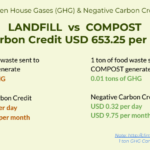ESG in Food Production Industry
ESG

ESG, or Environmental, Social, and Governance, is a framework used to evaluate a company’s sustainability and ethical practices.
The “E” focuses on environmental impact, the “S” on social practices, and the “G” on governance structures.
It helps assess how well a company manages its environmental footprint, engages with communities, and upholds ethical governance, making it a key consideration for investors and stakeholders concerned with responsible and sustainable business practices.
ESG and Food Production
ESG considerations are increasingly important for businesses, including those in the food industry. Here’s how ESG principles may apply to a bakery and confectionery factory operation:
1. Environmental (E)
- Energy Efficiency: Implement energy-efficient practices and technologies to reduce the factory’s carbon footprint
- Waste Management: Develop and adhere to effective waste management strategies, including recycling and proper disposal of waste generated during production
- Sustainable Sourcing: Consider environmentally sustainable sourcing of raw materials, such as responsibly harvested ingredients and packaging materials
2. Social (S)
- Employee Well-being: Prioritize the health and safety of workers, providing a safe working environment and fair labor practices
- Community Engagement: Engage with and support the local community, possibly through job creation, community programs, or partnerships
- Diversity and Inclusion: Promote diversity and inclusion within the workforce, ensuring equal opportunities for all employees
3. Governance (G):
- Compliance: Ensure compliance with relevant regulations and standards, including food safety regulations and labor laws
- Ethical Business Practices: Uphold ethical business practices, including transparency in operations and responsible corporate governance
- Risk Management: Implement effective risk management strategies to address potential challenges related to operations, supply chain, or other aspects
Adopting ESG principles not only aligns with sustainable business practices but can also enhance the reputation of the bread and confectionery factory, attract socially conscious consumers, and contribute to long-term business resilience. Regular reporting on ESG performance is also becoming a standard practice for companies looking to demonstrate their commitment to sustainability and responsibility.
Waste Management and ESG
Waste management strategies aligned with ESG principles focus on minimizing environmental impact, promoting social responsibility, and ensuring transparent governance. Here’s an elaboration on waste management strategies in line with ESG needs
1. Environmental (E):
- Waste Reduction and Recycling: Prioritize waste reduction at the source and establish comprehensive recycling programs to minimize the environmental footprint
- Circular Economy Practices: Embrace circular economy principles by promoting the reuse and recycling of materials, contributing to a more sustainable production lifecycle
2. Social (S):
- Community Engagement: Engage with the local community on waste management initiatives, such as organizing clean-up events or educational programs
- Job Creation: Explore opportunities for job creation through waste management projects, contributing to social and economic development in the local area
3. Governance (G):
- Regulatory Compliance: Ensure compliance with waste management regulations, demonstrating good governance practices and commitment to legal and regulatory standards
- Transparency and Reporting: Provide transparent reporting on waste management practices, including waste reduction targets, recycling rates, and any initiatives undertaken to address waste-related challenges
4. Supplier Collaboration (E, S, G):
- Supply Chain Responsibility: Work with suppliers to establish environmentally friendly packaging practices, reduce unnecessary packaging, and encourage sustainable sourcing
- Social Impact in the Supply Chain: Consider the social impact of waste management initiatives throughout the supply chain, promoting fair labor practices and responsible business conduct
5. Employee Involvement (S, G):
- Employee Training: Involve employees in waste reduction efforts through training programs, creating a sense of responsibility and engagement
- Safety and Well-being: Ensure that waste management practices prioritize the safety and well-being of employees, reflecting a commitment to social responsibility
6. Innovation and Technology (E, G):
- Technology Adoption: Explore innovative technologies for waste reduction, recycling, or waste-to-energy solutions, contributing to both environmental goals and operational efficiency
- Data Analytics: Utilize data analytics to track and analyze waste management metrics, supporting informed decision-making and governance practices
7. Community Impact (S):
- Community Benefits: Ensure that waste management initiatives positively impact the local community, addressing social needs and contributing to the overall well-being of residents
8. Continuous Improvement (E, S, G):
- Benchmarking and Goals: Set waste management goals aligned with ESG principles, regularly benchmark performance against industry standards, and strive for continuous improvement
- Stakeholder Engagement: Engage with stakeholders, including investors, customers, and regulatory bodies, to incorporate their perspectives and feedback into waste management strategies
By integrating ESG considerations into waste management strategies, companies can demonstrate their commitment to sustainable practices, ethical governance, and social responsibility, ultimately contributing to long-term business success and positive societal impact.

